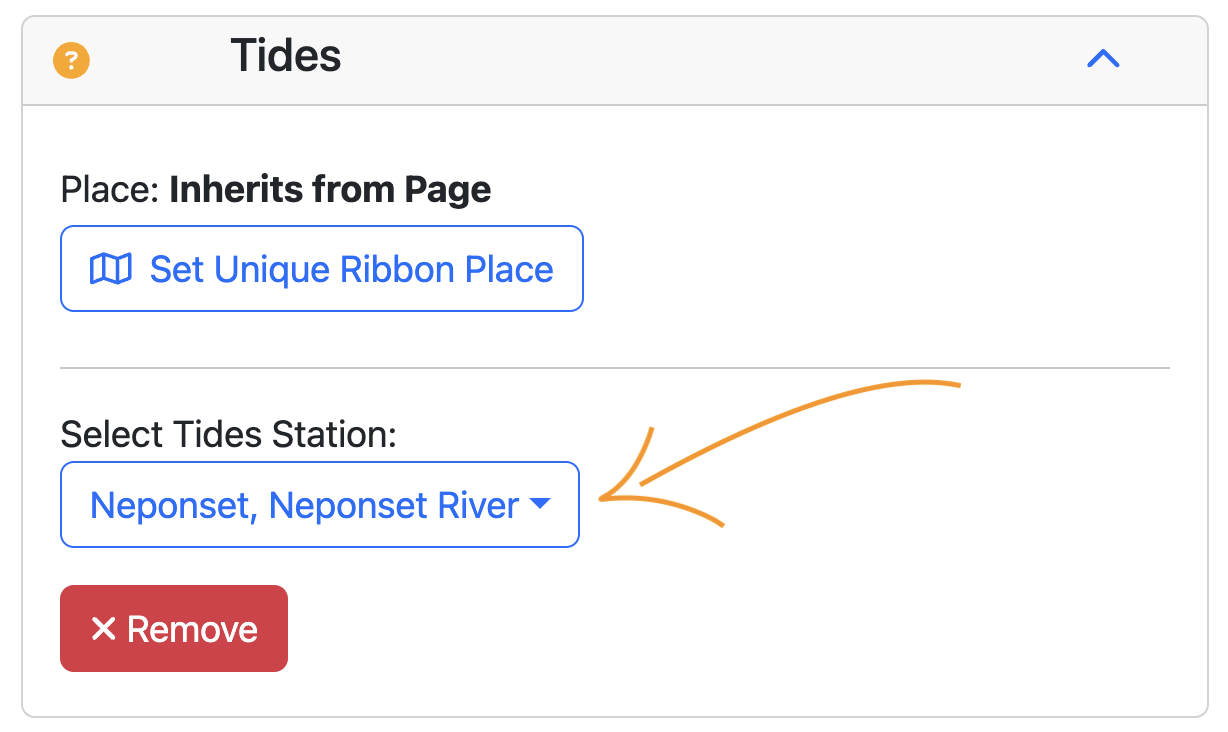Tides

Get Out Weather features tides for the United States. Tides are given in the US at specific stations. Today, there are 3,337 tide prediction stations, all maintained by the National Oceanic and Atmospheric Administration (NOAA, pronounced like the name Noah).
Adding to a page
To add the Tide Ribbon to your weather page, you need to be a suscriber($12/yr). Subscibe here. After subscribing, when go Go to Tools -> Edit and and the tap the Add Ribbon button, you will be able to select the Tides ribbon. After you add it, tap Save and View on the edit page. That's it, the rest of this post is optional to read.
Setting the Station
By default, Get Out will calculate the closest station the location of a page. If your page is conected your current location, it will give you the closest tide station. If you want to specify a station. Edit your page (with Tools->Edit) and click the chevron nest to expand the Tides configuration.

Tide Station Fun Facts
The oldest continuously operating tide station in the United States is located at San Francisco, California. It was established in 1854 by the United States Coast and Geodetic Survey. At this or any tide station, the game is to measure the water heights and use those measurements of the past to predict the future. When it comes to predicting tides, the good news is that scientists understand very well the forces that go into moving oceans and large lakes. The big players are gravitational forces of the sun and moon, but many others play a part.
Harmonic Analysis
For Reference stations, tide predictions are made using harmonic analysis, which breaks down the tide-generating forces into individual sine wave components known as tidal constituents. For example, Boston's tide station has 37 constituants, and they each have fancy names such as the "Larger lunar evectional diurnal constituent." These constitients each describe how different sine waves are combined to make the final result, just like different sine waves combine to make sounds. The largest player in tides is the moon's gravitational pull. The constituent for it is called the "principal lunar semi-diurnal" (fancy for twice a day) constituent which has a period of about 12.42 hours, meaning it pushes and pulls the tides every twelve and a half hours.
Calculating Tides Before Computers
Long before digital computers, the prediction of tides was of utmost important to trade, military, and eveyr day purpose. Prior to discovering the correct mathematics, it was most of predicted locally based recent tide observations and then observing the age of the moon. In 1872 the first Tide Prediction Machines (TPM) was invented by Lord Kelvin that literally consisted of wheels that turned for each constituent and then were mechanically combined to draw out the tide prediction on paper. A notable example was known as Old Brass Brains and was in service to the US from 1912 to until 1965. This included service as a classified secret during World War II where it was used to calculate the tides . These tide machines are fascinating examples of analog computers, the calculation machines that roamed the earth before the digital devices that dominate our world today.